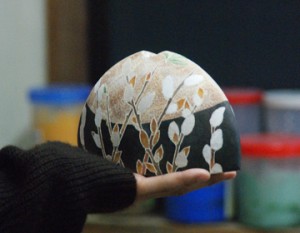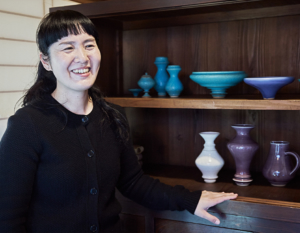In the world of tea ceremony utensils, design is free as long as the tea can be served and the tea can be enjoyed. In Nishikawa-cho, Yamagata Prefecture, there is a potter who makes tea utensils that have a reputation for being easy to handle and easy to make tea with. Ken Tsuchida was born in Kyoto, the second son of the twelfth generation of the ‘Senke Jusoku’ (Twelfth Master of the Thousand Family), but realised his childhood dream and now makes ceramics in a mountain village in Yamagata Prefecture.
The world of the tea ceremony in everyday life
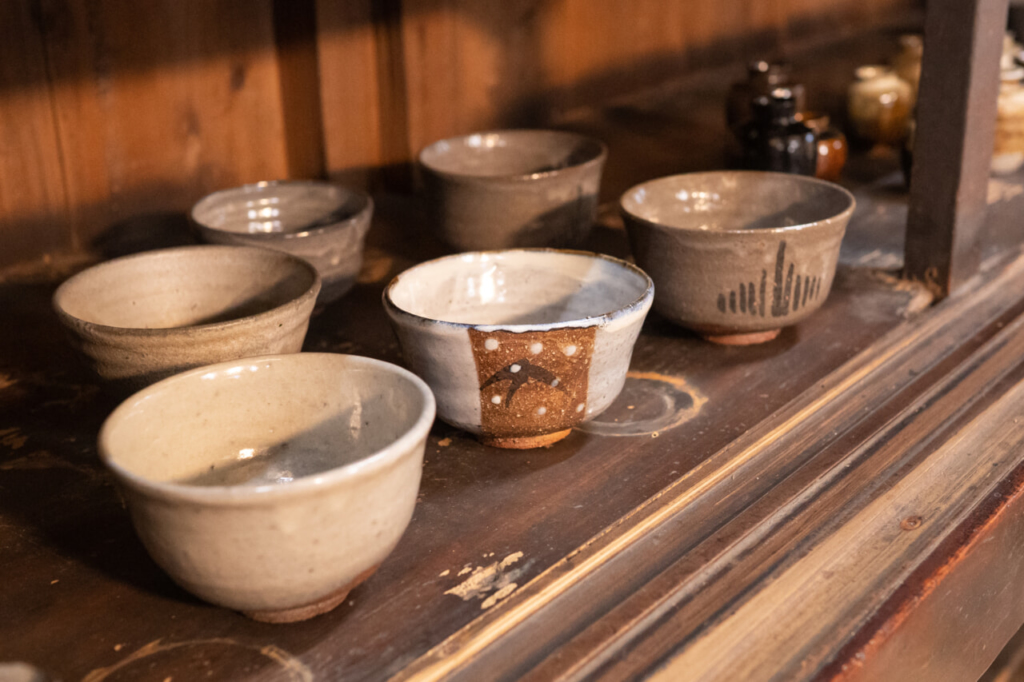
Ken Tsuchida has a climbing kiln, Chousetsu Kiln, in Nishikawa-cho, Yamagata Prefecture. After training in Kyoto and Karatsu, he moved to Ooisawa, Nishikawa in 2007 and produces mainly tea ceramics.
When he first started making ceramics, he just wanted to work with pottery. However, as she studied ceramics in earnest, she became fascinated by the depth of the art and developed a passion for creating her own works of art. Mr Tsuchida recalls that it was a natural progression for him to choose tea ceremony ceramics. She was born into a family of sack makers, who made bags for tea utensils, and from an early age was often taken to tea ceremonies by her mother, and was so familiar with the tea ceremony that she even made and drank her own tea. Such a family environment also led Tsuchida to tea utensils.
However, Ms Tsuchida was not born into a family of potters and did not even know what a potter did until she was in primary school. How did Ms Tsuchida end up becoming a potter?
Childhood dream of becoming a “potter”.
Mr Tsuchida was born in Kyoto as the second son of the twelfth head of the Tsuchida family of bag makers, who are involved in the production of bags for tea utensils and the fusas that wrap them, among the ten families of the Sansenke family, who have produced the tea utensils favoured by the famous tea ceremony family, the Omotesenke, Urasenke and Mushanokoji Senke, for many generations. He was born in Kyoto as the second son of the twelfth head of the Tsuchida family of tea ceremony sack makers, who were involved in the production of bags for tea utensils and the fusas that wrap them.
‘I’m the second son, so I always thought of myself as an insurance policy for my brother.
The family business was taken over by Tsuchida’s elder brother, but he always had it in mind that he would be the successor in the event of something happening to his brother.
This may have been one of the reasons why, even as he neared graduation from university, he still had no clear vision for his future, and was even thinking of embarking on a journey of self-discovery after graduation. At that time, her father told her not to just wander off, as if he could see right through her, and she reluctantly set about looking for a job.
After graduating from university, she worked for an incense manufacturing company in Kyoto City for about three years, when a turning point came. She began to think about her next career move when she felt that the birth of her brother’s first son had removed any possibility of her taking over the family business.
At this time, the words of a friend from a former primary school reunion came back to him. What happened to your dream of becoming a potter?” The question was, “What happened to your dream of becoming a potter?
When Mr Tsuchida was in the third grade of primary school, he wrote “potter” as his dream for the future. The reason for this was that he happened to watch a TV programme in which a craftsman was turning a potter’s wheel and thought it looked interesting. Until then, I didn’t even know what a potter was. His homeroom teacher remembers that time and said, “You are the only one who wrote that you wanted to be a potter, even though you are not the son of a potter”.
From there, Tsuchida decided to become a potter, thinking that “it might be cool to live a life that fulfils a childhood dream”.
Starting from “zero” experience
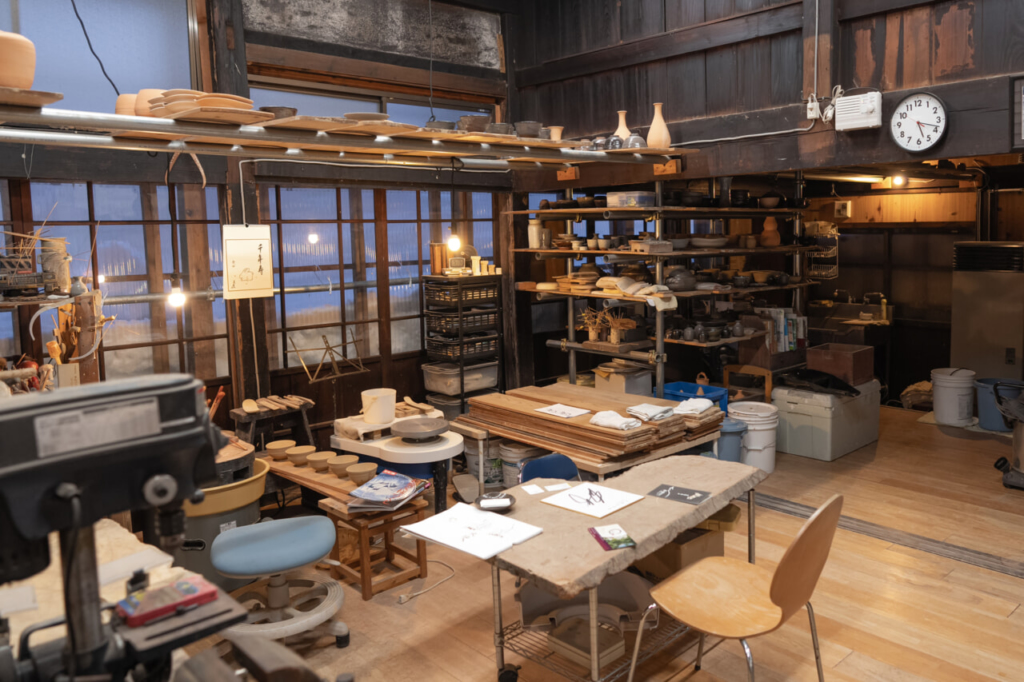

However, with no knowledge or experience of the world of pottery, Tsuchida began attending pottery classes at a culture centre while working. While consulting with the teacher there, he learnt that there was a training school in Kyoto if he wanted to pursue a full-fledged career in ceramics.
After learning the basics of kyoyaki at a training school, he trained in Karatsu, Saga Prefecture, where pottery originated, in order to acquire more in-depth skills. One of the reasons he chose Karatsu was that he wanted to learn how to use a climbing kiln. Nowadays, most places fire pottery with electricity or gas, but I thought that knowing how to fire with wood and not knowing how to fire with wood would be different, even if we were dealing with the same electric kiln.
In the world of the tea ceremony, Karatsu ware has long been known as ‘Ichiraku, Ni-hagi, San-karatsu’, and has established its position as a tea ceremony ware. The style of Karatsu ware that fascinated him is woven into Tsuchida’s current work.
At the time, Mr Tsuchida was single and thought that all he needed was an income to feed himself, and as the only potters he knew were successful ones who appeared in the media, he was not worried about making a living as a ceramic artist.
However, telling her father that she was going to pursue a career in ceramics was a big decision. He was surprised to hear that there are plenty of painters and potters in the world,” says Tsuchida. But his father said he wanted to do everything he could, and that gave him great emotional support.
After Kyoto and Karatsu, moved to Yamagata as a matter of nature.

After four and a half years of training in Karatsu, Tsuchida opened his own kiln in Ooisawa, Nishikawa, Yamagata Prefecture. The fact that he was led to this place “was all a matter of nature”, says Tsuchida.
Mr Tsuchida was born in Kyoto, but his mother’s family runs a restaurant called Agetama in Yamagata City, Yamagata Prefecture. When he was looking for a place where he could build a climbing kiln and where he would have no problems emitting as much smoke as possible, he was given an old house in Nishikawa-cho, which his grandfather had originally owned as a holiday home for mountain play, at the right time.
However, Ooisawa, Nishikawa-cho, stretches at the foot of Mount Gassan, a famous mountain in the north-eastern part of Japan, and is one of the heaviest snowfall areas in the prefecture, with many metres of snow piling up in winter. Even people who live in Yamagata say, “How did you decide to come from Kyoto to this snowy region?
Before deciding to move to Yamagata, he visited Yamagata for the first time with his wife. Seeing the beautiful fresh green landscape, they exchanged words, “It’s a nice place”. Later, when Mr Tsuchida suggested that they visit in winter too, his wife said, “I don’t want to. I don’t want her to want to go there after seeing it”. While it was a funny story, it was the first time he had tasted Yamagata in winter since moving here.
Although he was initially surprised by the depth of the snow, he was touched by the warmth of the local people, including a neighbour who was an expert in heavy machinery who helped him clear the snow, and a neighbour who was worried about the lack of food in winter and gave him some vegetables.
As he says, “I am blessed with people.” Since moving to Yamagata, his connections have been mysteriously linked one after another. While it is common for other artists to experience selling their work at galleries and exhibitions after becoming independent, Mr Tsuchida says he has no such experience.
An acquaintance introduced Ms Tsuchida to a gallery owner in Yamagata City, saying that he should support her, which led to an opportunity for Omotesenke and Urasenke teachers to visit her workshop. From there, talk of a solo exhibition came up, and in 2011 Tsuchida held her first solo exhibition in Yamagata City.
Starting with this solo exhibition, she has been actively expanding her activities not only within the prefecture but also in Sendai, Kyoto, Kanazawa and other places in Japan, including a pottery exhibition at an incense manufacturing company where she previously worked and a brother exhibition with her brother, the 13th generation head of the family.
‘If you make pottery deep in the mountains and sit still, no one will look at it.’
Her future goal is to hold solo exhibitions in all 47 prefectures of Japan and abroad, without regard to scale. She also has a passionate desire to make tea more accessible and enjoyable for the younger generation.

Not being particular is being particular.
I have lived in Yamagata for about 15 years. In the past, I had a fixed idea of what I had to make. Now, however, I aim to produce pieces that are created in harmony with nature, without any sense of intent, and which can only be produced in a rich natural environment, while preserving traditional techniques.
‘I was following my child’s ski club and the instructor started teaching me too, so I decided to get my licence.’
At first glance, this may not seem to have anything to do with pottery, but his character is so focused on one thing that he loses sight of his surroundings if he is only absorbed in his pottery making. The ideas that come from his life and play in Yamagata also lead to free and unselfish pottery making.
For example, one white glazed pottery was decorated with photographs of the landscape of Oisawa. In this way, the people who pick up the work can enjoy their own interpretation, for example, “Is this the colour of snow white?
Tea ceramics is also one of the tools used in the world of tea. While Mr Tsuchida believes that expressing passion is also the work of an artist, he says that the basic premise of tea utensils is that they should be easy to use and usable. I want people to use them more and more in their daily lives, not only on special occasions because they like them.
Tea is a circle of people, and it’s a session that they create on the spot. I hope it can be a tool for them to play well together there.”
And like Kyoto, where tea culture is deeply rooted, the work is somehow elegant and refined.
The style of ‘Oisawa ware’ is not set in stone.
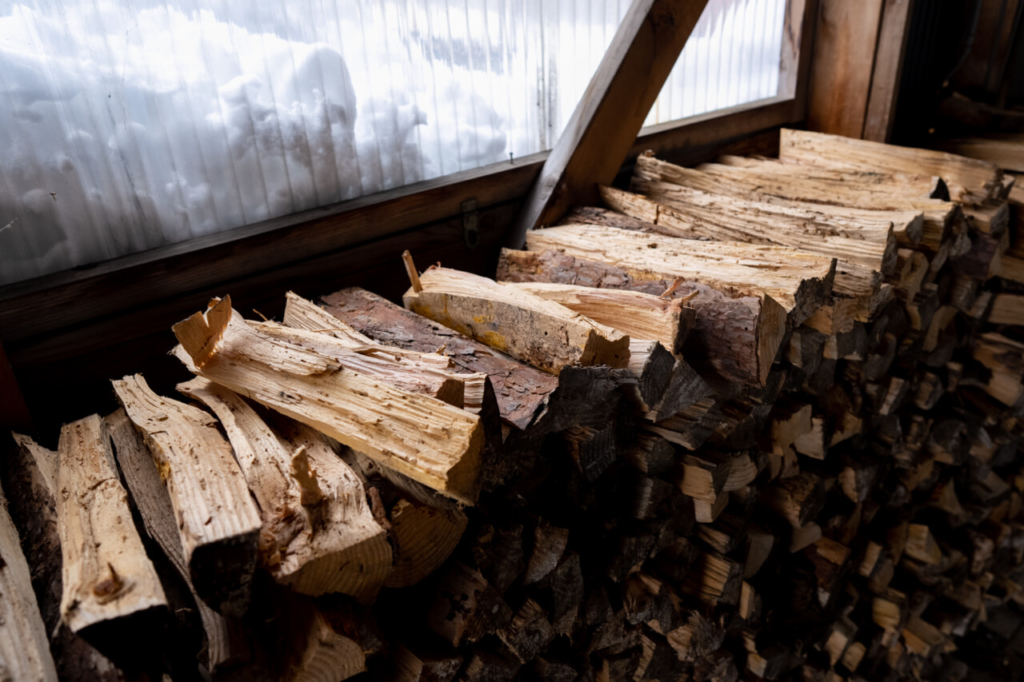
In 2014, Tsuchida’s work was named ‘Oisawa-yaki’ by Kimura, director of the Kitamura Museum of Art in Kyoto, which is renowned for its collection of tea ceremony art.
The base is Karatsu ware, as he studied in Karatsu, but what are the characteristics of Ooisawa ware, which is not Karatsu ware?
The pottery that is called ‘Fatty’ pottery has been passed down through the ages for hundreds or thousands of years, and many things have been removed, and the good things remain. That is the characteristic of Oizawa-yaki, and it would be unduly presumptuous to talk about the characteristics of Oizawa-yaki while I am still alive. I hope to create something that will make people who see my work somewhere say, ‘This is Ooisawa ware, isn’t it’,” says Tsuchida.
He believes that Ooisawa-yaki, like Bizen-yaki and Karatsu-yaki, will establish its own characteristics over time.
Tsuchida’s Ooisawa-yaki, which is fired with great care in a climbing kiln, will be a part of the daily lives of those who use it and will continue to be loved for a long time.





